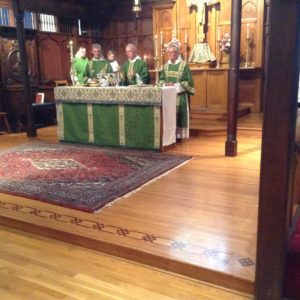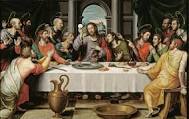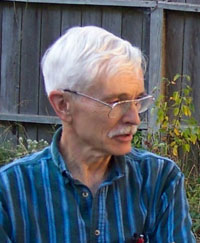Being Priests
A sermon preached by Christopher L. Webber at All Saints Church, San Francisco, on October 24, 2021, on the 65th anniversary of his ordination to the priesthood.
“The former priests were many in number, because they were prevented by death from continuing in office; but Jesus holds his priesthood permanently, because he continues forever. Consequently he is able for all time to save those who approach God through him, since he always lives to make intercession for them.”
Hebrews 7:23-28
There’s a message for me in the second reading this morning. It tells us that “The former priests were many in number, because they were prevented by death from continuing in office.”
A modern translation puts it this way: “there had to be many priests, so that when the older ones died off, the system could still be carried on by others who took their places.”
“When the older ones died off . . .” Happy anniversary!
Right: “Happy anniversary – but let’s be practical: there’s somebody waiting to take your place.”
I hope they don’t mind waiting a little longer.
But the important point the author is making is that all this coming and going of priests takes on a whole new light when priesthood itself is reoriented, restructured, recreated by the death of Jesus Christ on the cross.
But let’s go back and start over. How did we get from there to here? What were priests for? Priests were for putting things right between God and human beings. And it wasn’t just the Jews who had priests. So did the Canaanites, so did the Romans, so did the Egyptians, so did almost everybody at a certain stage of human development because it was obvious as human beings evolved and became thoughtful that there was something askew, something out of alignment, something messed up in human affairs and therefore a need to do something to set things right.
It was pretty obvious: here on the one hand is a beautiful world and here on the other hand are human societies, human beings making a mess of things – lying, stealing, fighting, killing – husbands and wives at odds with each other, children at odds with parents and peers, politicians at odds with the facts.  Something’s wrong, something’s deeply wrong, fundamentally wrong, and we need forgiveness and renewal. We need help getting it right. But how?
Something’s wrong, something’s deeply wrong, fundamentally wrong, and we need forgiveness and renewal. We need help getting it right. But how?
Well, maybe if we could get help from above it would make things better, so let’s bring the gods an offering and ask their help in making life better. And when things go well – sometimes they do – sometimes things do go better than we could have imagined or merited – love and marriage can be great – sometimes life in a parish can be wonderful – and sometimes politicians work for the common good. Sometimes. Sometime it doesn’t rain on our parade or our picnic. Sometimes. And we should be grateful that there are achievements to celebrate: more comes our way than we could ever deserve. So let’s also celebrate that with sacrifices. Let’s bring the gods an offering, not just to say, “I’m sorry” but also to say “I’m thankful.” there are lots of reasons to offer sacrifice, to keep things cool between the gods and us because so much of life is beyond our control and we need the unseen powers on our side. So either way – because we need help or because we’re grateful – we need to bring offerings: sin offerings, thank offerings, offerings to make things right with the gods or the God and we need priests to help us make those offerings and we need to bring our best.
And so a system developed and you can read about it in your spare time in the Book of Leviticus:
“When you sacrifice to the Lord your God bring an ox or a bull and kill the animal and sprinkle the blood on the sides of the altar then skin it and quarter it and build a wood fire on the altar and put the sections of the animal and its head and its fat upon the wood; the internal organs are to be washed, then the priests will burn them upon the altar and they will be an acceptable burnt offering with which the Lord is pleased.”
Imagine doing that on Sunday morning. We’d need more hands on the altar guild for sure. But that’s just getting started. The Book of Leviticus goes on chapter after chapter with directions for sin offerings and guilt offerings and offerings of thankfulness
But also in the Old Testament you find the writings of the prophets, who took a different slant on things and spoke in God’s name to say, “I hate, I despise your sacrifices; turn from your evil ways, do justice, love mercy . . .” Which is great, but forgets that fundamental human problem: we can’t. We want to, but we can’t. We mess up. There’s always a terrible gap between the ideal and the reality. We need to do something to get things right. We always fall short, so what can we do to get the forgiveness we need, the help we need, to bring ourselves into alignment with God or God into alignment with us?
Well, that’s the history, but that’s not where we are. We are AD not BC. There’s really nothing we can do now because whatever is needed has been done for us by the death of Jesus Christ on the cross: a “ful l, perfect, and sufficient sacrifice” as it said in the Prayer Book 65 years ago and still says in Rite One. Nowadays we settle for calling it “a perfect sacrifice.” But whatever you call it, it’s what we never had until Jesus. Now there’s no need for sheep and oxen and all that because we have something better to offer to get ourselves right with God. Jesus is priest and sacrifice he makes the offering and he is the offering, and he joins us in that offering because are members of his body by baptism, and that body of which we are members is a priestly body so we also offer ourselves. It’s why we’re here this morning: not just to celebrate my priesthood, though that’s nice, but to enact your own. Those who are baptized are made members of the body of Christ, the body that was offered on Calvary, and we offer ourselves as a priestly people. We are a priestly people, but can’t have everyone stand at the altar on Sunday, so we ordain certain people to be priests for a priestly people. We come to take part in the one perfect sacrifice of Jesus and we all have a role to play. It’s why it makes sense for those who can and who want to to stand during the prayer of consecration: to stand with the priest and
l, perfect, and sufficient sacrifice” as it said in the Prayer Book 65 years ago and still says in Rite One. Nowadays we settle for calling it “a perfect sacrifice.” But whatever you call it, it’s what we never had until Jesus. Now there’s no need for sheep and oxen and all that because we have something better to offer to get ourselves right with God. Jesus is priest and sacrifice he makes the offering and he is the offering, and he joins us in that offering because are members of his body by baptism, and that body of which we are members is a priestly body so we also offer ourselves. It’s why we’re here this morning: not just to celebrate my priesthood, though that’s nice, but to enact your own. Those who are baptized are made members of the body of Christ, the body that was offered on Calvary, and we offer ourselves as a priestly people. We are a priestly people, but can’t have everyone stand at the altar on Sunday, so we ordain certain people to be priests for a priestly people. We come to take part in the one perfect sacrifice of Jesus and we all have a role to play. It’s why it makes sense for those who can and who want to to stand during the prayer of consecration: to stand with the priest and  express our own priesthood. The priest’s role is a unifying role, an expression of who we all are and the priest plays out that role day by day in everything he or she does, symbolizing Christ’s presence, uniting and offering the daily life of the church.
express our own priesthood. The priest’s role is a unifying role, an expression of who we all are and the priest plays out that role day by day in everything he or she does, symbolizing Christ’s presence, uniting and offering the daily life of the church.
So let me dramatize all that by telling you a story about one day in my priesthood – not a typical day, but one that dramatizes perhaps priesthood at a working level There came a Saturday morning 60 years ago when I was the priest at a parish in Brooklyn, the Greenpoint section of Brooklyn, a stable, blue colar neighborhood. I’d been there several years and one this particular Saturday morning I was for some reason sitting in the sun on the back steps of the Rectory. My wife was just inside in the kitchen reading the NY Times, and she called out, “Did you see about Peter L. in the paper?” I said “No what abut Peter L.?” And she said, “Well, they found his body in the trunk of a car on the dock” and I said, “I guess I’d better go see his family.” I’d met Peter one night when I was making a parish call on his wife. She and the three children were in church most Sundays but I hadn’t met Peter before. He came in that night and I got introduced, but he didn’t take his dark glasses off and he didn’t stay – and now he was dead. Before I could get up to get organized and go and my wife called out “Did you see about Richard Y? and I said, “No, I didn’t.” I guess I really hadn’t looked at the paper at all. “So what about Richard Y?” “Well, he stole a car and ran it into some children on the sidewalk, killing some and injuring others and fled the scene of the crime and resisted arrest.” So I said, “Well, I guess I need to call on the Y family also.” I’d been there of course – the children were often in church – but I think Richard was the oldest of 10 or 12 in a pretty chaotic family. I’m sure I’d met him, but I didn’t really know him. So I got myself organized and went to visit the L family first. Peter’s relatives were there, and they were making a great fuss about planning a funeral and insisting on emptying the bank account to buy flowers and hire limousines and make a show. Mrs L was resisting – she had small children to provide for and didn’t know where the money would come from. I took her side and told people there was no need for a big show, that’s not how we need to do things. And that carried weight, because I was the priest after all and I spoke with that authority. That’s the main thing I remember about that visit. But then I had to go on to see the Y family. I’d been there before also. A priest calls on people so he or she doesn’t come as a stranger when there’s a crisis. I’d been there and I had the sense of a family with too many children and not enough stability, but by the time I got there Mrs Y had reacted to the story about her son by dying of a heart attack. So I had to spend some time with them, and what with one thing and another it was evening, it was dark, before I tracked down Richard Y in a prison cell in Manhattan to tell him through thick glass with the help of a microphone that his mother was dead.
One day in the life of a parish priest. I will say I never had another day quite like it and that’s not a typical day in the life of a parish priest. Not every day in a priest’s life is like that. But every day in the New York Times is like that – every day is like that somewhere because every day we human beings are out there messing up our lives and other lives and it’s no wonder the ancient peoples brought sacrificial offerings and splashed blood on the altar looking for help with their lives. And not just the ancient people. There’s an old spiritual that says it all: “It’s me, it’s me, it’s me, O Lord, standin in the need of prayer; Not my father nor my mother but me O Lord. Standin in the need of prayer.”
But there’s a footnote to the story: many years later I was in my car with the radio on to get the news and there was a report about a District Attorney on Long Island who was dealing with a case in court and the name of the District Attorney was the name of one of the children in the L family. It wasn’t a usual name and I like to think that his mother hung in there and made a difference for those children, and that my successor in that parish and other priests perhaps in other parishes had also been there for them and made a difference.
Now that was not, as I said, a typical day in the life of a priest – thank goodness – but it’s a dramatic way of making my point: That the priest is someone who is there, who is here in this community, who represents this congregation and the Lord Jesus day by day, good times and bad. The priest is a  representative person, representing the members to God, representing God to the members, and leading the offering of ourselves to God that makes us who we are: God’s people, a priestly people, members of the body of Christ our great high priest in whom we live and move and have our being as we carry out our own priesthood representing Jesus wherever we are and offering our own lives for the changing, the transformation, the remaking, the renewing, the redeeming of this broken, suffering world.
representative person, representing the members to God, representing God to the members, and leading the offering of ourselves to God that makes us who we are: God’s people, a priestly people, members of the body of Christ our great high priest in whom we live and move and have our being as we carry out our own priesthood representing Jesus wherever we are and offering our own lives for the changing, the transformation, the remaking, the renewing, the redeeming of this broken, suffering world.
 Christopher L. Webber
Christopher L. Webber
Thanks for this, Chris, and blessings on your 65th!